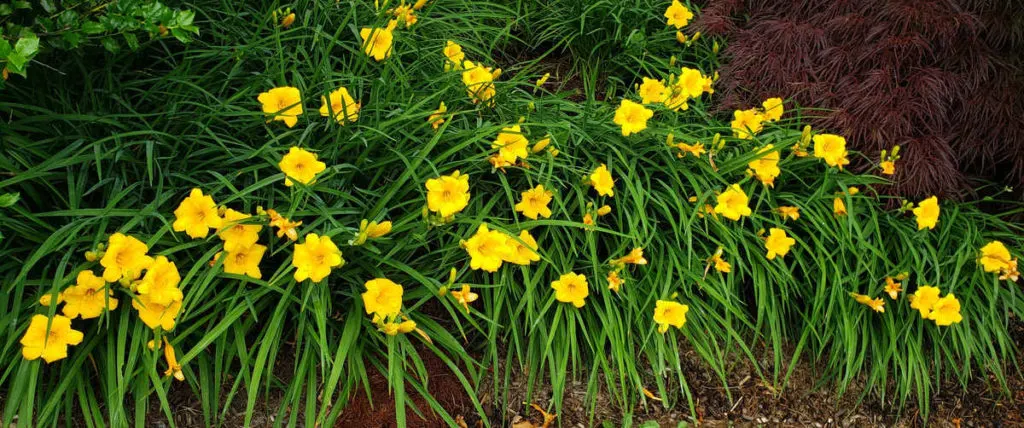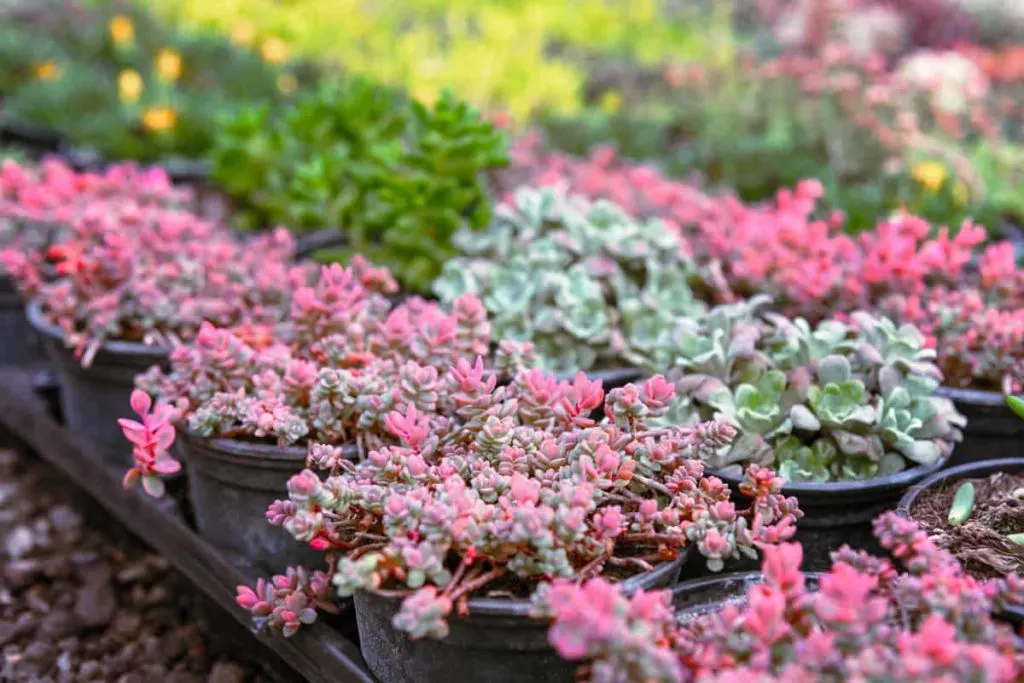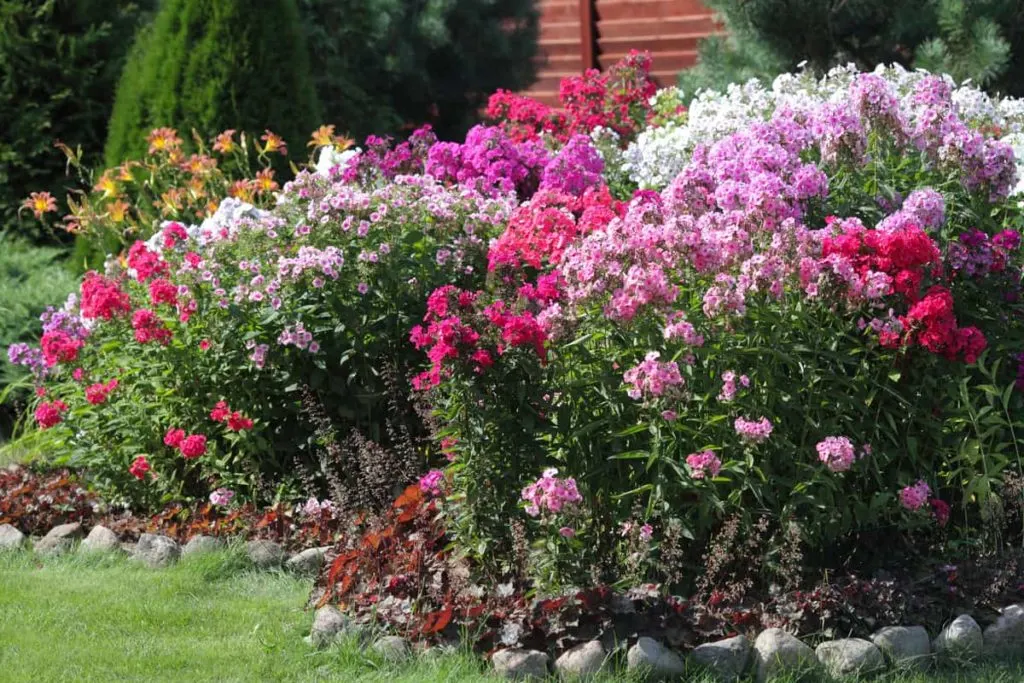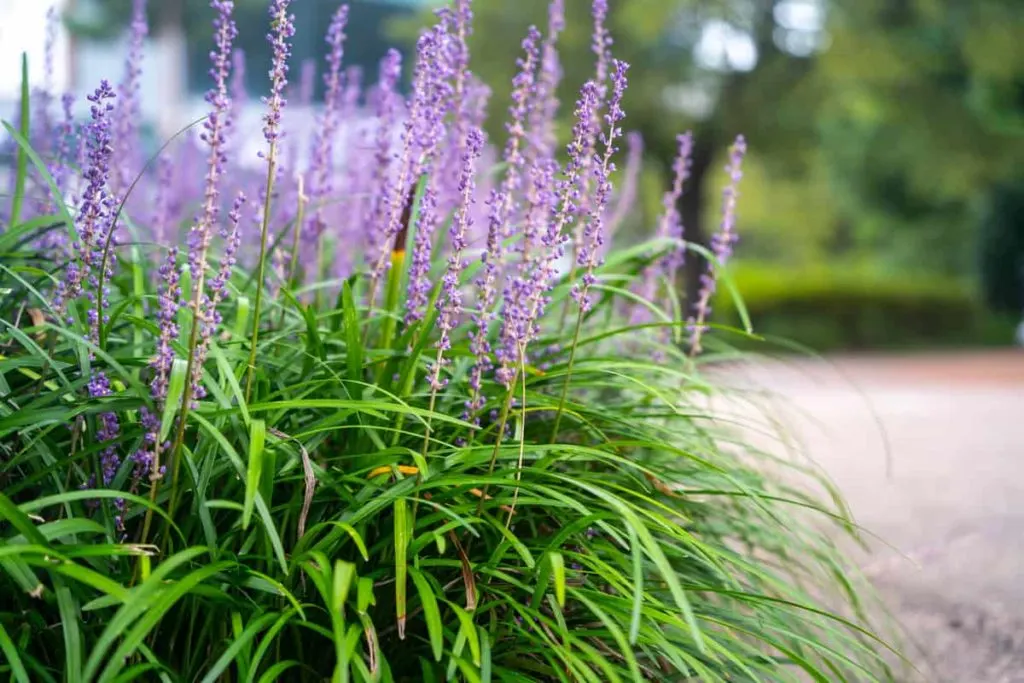
Easy going, low-maintenance, gorgeous, and long living. Perennials that stand the test of time are all the above.
These undemanding perennial plants are a perfect way to begin establishing a legacy of blooming gardens.
Create Nostalgia
Long-living perennials deliver an established, historic flare to the landscape. You know long living perennials when you see them. They are often found at old homesteads or abandoned farmhouses.

Sometimes long-lived and long-loved perennials have been passed around a neighborhood. Every older home of such neighborhoods has an iris of an identical color and height. Other times, these wonderous plants are passed down through a family. Everyone is growing Aunt Matilda’s rare peony, or Grandma’s favorite daylily.
Spread the Joy

Yes, long living perennials are often up for dividing. This is an excellent attribute! If you love that gorgeous iris, daylily, or peony, once it is mature, it can be divided or propagated.
You can plant it throughout your landscape for dramatic effect. Or share it with friends, neighbors, and family members.
Depend On It
The much-loved, long-living perennial is reliable! They only tend to get better and better.
Year after year, they deliver their flower show right on time. Often without requiring much attention too!
Most will have one magnificent bloom time. The rest of the time, they conserve their energy, getting ready for next year’s spectacle.
A Little Time to Grow Up

It is true, the first couple of seasons, long-lived perennials are a bit shy.
My favorite peony has been moved around a few times. Each time, it takes a couple of years to grab hold, feel comfortable, and prepare itself for a fantastic blooming season. In it’s fourth year in its current spot, it is in its happy place.
It is rewarding my patience with literally buckets and buckets of giant fragrant blooms. Its neighbors, daylilies, and monkshood are acting the same.
Living Lasting Legacy
Many perennials live three to ten years. These would be known as short-lived perennials. Long living perennials, on the other hand, outlast and outlive their friends by 10 to 40 years!
This is why these legacy-leaving plants are passed down in families and throughout neighborhoods. They are tied together with our memories of where we live and who we live with.
17 Long Living Perennials
1. Daylily (Hemerocallis)
A master at mass plantings, daylily can decorate areas where other plants just don’t make it. This plant is so tough, I have seen it coming up between pavement and building, planted at that spot in a garden a generation before.

The graceful arching foliage are lush and attractive. Each bloom lasts for just one day but arrives in a long-lasting parade of colors. Yellows, oranges, reds in heights of 1 to 3 feet, depending on the extensive and extravagant list of varieties and cultivars of daylilies.

Hardy in zones 3 to 10, daylily is so trouble free, you can even ignore it.
Not well known, daylily is also entirely edible, the tubers are apparently delicious though not overly abundant, and the buds and flowers are nice battered and fried.
2. Peony (Paeonia)
An incredibly useful perennial, peony lasts for generations. The foliage is lush and interesting. These heavy hitters love a little staking or discreet caging to keep them upright. The blossoms can be so full and heavy they sometimes flop over.

A delightful springtime fragrance, peony makes a wonderful cut flower and subsequent potpourri. In this way you can extend the enormous bountiful blooms that come in a vast collection of colors and flower styles.

Hardy in zones 3 to 8, the vibrant flowers arrive in late spring to early summer, blooming best in deep well draining soils in full sun to part shade. The roots tend to be slightly shallow, and brittle so take care when dividing these gorgeous plants.
3. Hosta (Hosta)
The cornerstone of memorable shade gardens. Hostas, once established, are reliable to brighten up all shade gardens with their abundant variety of shapes, textures, sizes, and colors.

Hostas benefit from some protection from deer and slugs and snails.

Thriving in zones 3 to 8, hostas love full to part shade. They divide easily in spring. Wonderful to plant in masses or in collections of interesting contrasting variations.
4. Iris (Iris)
The upright spiky grass-like foliage bears tall spears of flowers in spring and summer. Some varieties are water loving, while others are quite drought tolerant.

Many long hours have been spent lovingly separating iris rhizomes to replant them throughout the garden. These long-lived plants need to be planted shallowly with some rhizome exposed. Otherwise, they won’t bloom.

An incredibly easy-care plant once established, Iris thrive in zones 3 to 10, depending on the variety, of which there are many.
5. Oriental Poppy (Papaver orientale)

My confession, I’ve been trying to kill my oriental poppy for years. No, not really. I just want to move it! I can’ get it to grow in any of the places I plant it, but I desperately want to renovate the garden it is in. I’ve successfully moved everything else, but the poppy keeps coming back. In truth, I am probably expecting the extremely low maintenance I’ve come to enjoy with this established specimen. I need to baby the transplants a little better.

The fabulous flowers and awesomely weird seed heads are only part of this attractive plant. Tough as nails, once established as I alluded to above, poppies have interesting thistle-like foliage. After their flamboyant flower show, they take a backstage to other plants around it, providing a nice backdrop.
Full sun in well-drained, deep soils, Oriental poppies grow to about 3 feet in zones 3 to 7.
6. Sedum (Sedum)
Sedums are paramount in the succulent garden scene. They live a long time showing off their interesting flowers in late summer and early fall.

Varieties can be extremely short or grow 1 foot or more. They are excellent to grow in masses, in contrasting variations, in rock gardens and in water conscious gardening endeavors.

Sedums are hardy in zones 3 to 8. They are a low-maintenance colorful plant that is long lived and lovely for sharing.
7. Moss Phlox (Phlox subulate)
This groundcover phlox seems more evergreen-like juniper than herbaceous perennial. They give it away with their explosion of brightly colored masses of blooms each spring.

Unique colors of rare blues, pinks, whites, and violets are excellent in rock gardens. They are mat-forming and vigorous. This makes them excellent to take on rolling, hilly forms.

This short phlox grows only about 6 inches tall. It loves full sun, well-draining, almost rocky soils in hardiness zones 3 to 9.
8. Garden Phlox (Phlox paniculata)
A favorite plant for fragrant fall blooms, phlox is the centerpiece of many cottage gardens.

It is long lived, and its woody roots and stems are tough. They transplant easily, blooming often in their first year. This plant gets better with age, taking on a nice tidy form reaching 3 to 5 feet. The prolific heavenly scented clusters of vibrant blooms bring in late season butterflies in late summer and early fall.

Garden phlox handles heat extremely well, loves a bit of space to provide good air circulation, and thrives in hardiness zones 3 to 9.
9. Yarrow (Achillea millefolium)
You may have heard me extol the many virtues of yarrow before. So tough you can mow it! And it is lovely when mowed. Soft and holds its deep green color even in the heat. Yes, it has creeped into the lawn in a few places. We may decide to let some of those areas grow to their natural height of 2 to 3 feet tall. In fact, yarrow has managed to outcompete some of the lawn weeds! Instant garden, anyone?

This drought-tolerant native plant makes a variety of colorful flowers much loved by pollinating and beneficial insects including butterflies. The flat flower umbels are white or yellow, expanding to pinks, reds, mauves, and peaches. They bloom throughout the summer months.

Glorious and extremely easy to care for, Yarrow thrives in dry poor soils in full sun. They seem to be without limit to me but are listed as hardy in zones 3 to 9.
10. Coneflower (Echinacea)
Another incredibly long-lived perennial, coneflower dominates in the flower border. It may live for over 20 years.

The wonderfully colorful blooms last a long time throughout mid to late summer. A great friend to visiting birds and butterflies, coneflower make excellent cut and dried flowers as well.

They bloom more prolifically in full sun and don’t like wet feet, so well-draining soils is a must. Hardy to zones 3 to 8.
11. Butterfly Weed (Asclepias tuberosa)
As the name suggests, this plant is loved by butterflies and its pollinating buddies. Once established it is long living but needs a few years to reach maturity.

Butterfly weed blooms in summer, reaching a mature height of 1 ½ to 3 feet tall. It is not an easy plant to transplant. It is best to start from seed by direct sowing in the place where it will live out its long life.

Hardy in zones 4 to 9, butterfly weed sleeps in a bit so don’t be worried if you don’t see it first thing in spring. It loves full sun and well-draining soil.
12. Bee Balm (Monarda)
A reliable choice for bringing in the butterflies as bee balm blooms year after year. It spreads easily so give it lots of space. An asset to plant where deer may be a problem.

This long-living plant also has an extended blooming period from early summer through to fall. Flowers are red, pink, or lavender on plants that are 1 ½ to 3 feet tall. Interestingly, bee balm leaves make a tasty tea.

Possibly a bit of an aggressive neighbor, bee balm is hardy in zones 3 to 8. A native plant that handles full sun and is drought tolerant as well.
13. Monkshood (Aconitum)
This purple-flowered tall perennial is a favorite in my garden. I use it as a hedge around the vegetable plot to keep out the deer. Works a charm but monkshood is extremely poisonous. This plant only is visited by many bees.

Also, an incredibly long blooming season from late spring to early fall, the long living monkshood is perpetually being divided. Given to friends and making excellent backdrops in many other parts of the garden.

Monkshood is hardy, one of the first perennials to sprout in spring. It grows in zones 3 to 8. It reaches 2 to 8 feet in height tolerating sun to part shade. The plant’s condition is often better with more blooms in the shade.
14. Liatris (Liatris)
Also known as blazing star, liatris is long loved for its easy care and three season interest. They reach 1 to 5 feet in height. Wonderful for cut flower arrangements as well as for attracting bees and butterflies.

Grassy mounds in spring are attractive, with long-bloom season of spikes of thistle-like purple flowers that are fuzzy and bloom from top to bottom. Liatris bloom in late summer to early fall followed by colorful fall foliage.

They are hardy in zones 3 to 9 though may benefit from mulch protection in colder regions. Similarly, they bloom best in full sun but appreciate a little shade in hot exposed areas.
15. Liriope (Liriope)
This pest resistant plant is an old-fashioned favorite in the south. The arching grass-like leaves are green or variegated, and the plant is an excellent groundcover and is often used for erosion control.

The blooms are graceful stems of blue, pink, white, or lavender that arrive in late summer. The plant generally reaches 18 inches tall, making it a wonderful front of the border plant to use in mass or in repeats.
This wonderfully low-maintenance tough perennial is hardy in zones 5 to 9. It loves full sun, taking the heat well in poorer soil that drain well.
16. Catmint (Nepeta)
This drought tolerant member of the mint family comes in a wide variety of sizes with dwarf versions of only 8 inches to 3-foot-tall varieties.

The late spring and early summer blooms provide an excellent food source for bees, butterflies and their friends including hummingbirds. Flowers are blue, purple, or white. The attractive foliage is lacy and aromatic.
Easy to grow, tolerating many soil conditions, the sprawling habit is lovely in this long-living perennial which is hardy in zones 4 to 8.
17. Goat’s Beard (Aruncus dioicus)
An attractive back-stage plant that will hold its place, goat’s beard grow 3 to 6 feet tall with a wide spread.

The bright sprays of flowers are short lived and only last a week or so but are a memorable spectacle of midspring which return year after year.
A long-living perennial giant, goat’s beard thrives in full sun to part shade. It prefers moist sites and is hardy to zones 4 to 9.
Final Thoughts
Create a legacy with nostalgia-inspiring long-living and long-loving gorgeous perennials. Plant them once, nurture them for a little while to get them established, and then enjoy beautiful blooms for decades.
